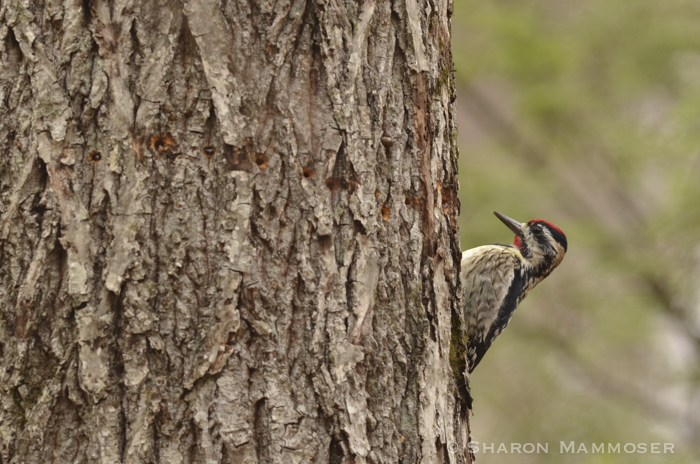 You may never have seen or paid attention to a Yellow-bellied Sapsucker but I can bet money that you HAVE seen a Ruby-throated Hummingbird. This is the only species of hummingbird on the east coast and the one that visits your feeders or flowers. Do you know what their relationship is with Sapsuckers?
You may never have seen or paid attention to a Yellow-bellied Sapsucker but I can bet money that you HAVE seen a Ruby-throated Hummingbird. This is the only species of hummingbird on the east coast and the one that visits your feeders or flowers. Do you know what their relationship is with Sapsuckers?
As you likely learned in an earlier post, Yellow-bellied Sapsuckers are a kind of woodpecker that is migratory. They travel south for the winter (smart birds!) and then come warmer weather, head to the northern states and Canada where they will spend the summer and breed. They time their migration to take advantage of the rising sap in the trees, creating row after row of wells in trees with their strong bills. Then, with their 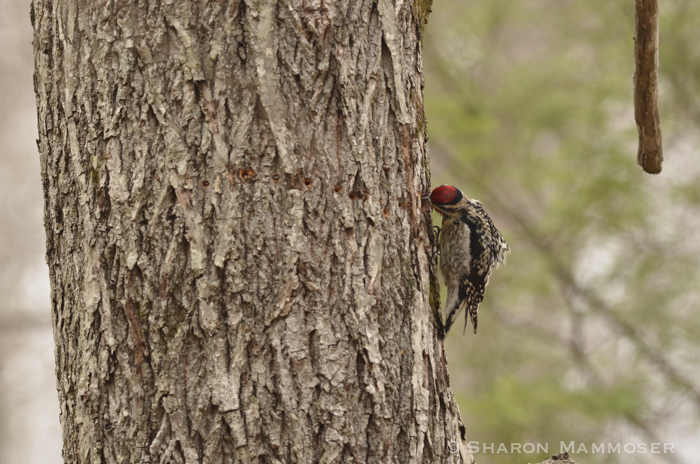 long, brushy tongue, they return regularly to drink the sap and feed on the insects attracted to the sugary liquid–a sugary liquid that is much like flower nectar with sucrose and amino acids.
long, brushy tongue, they return regularly to drink the sap and feed on the insects attracted to the sugary liquid–a sugary liquid that is much like flower nectar with sucrose and amino acids.
Ruby-throated hummingbirds also migrate north after a winter spent in Mexico or Central America. They follow about two weeks behind the woodpeckers, arriving in many places before the flowers are blooming. After their long and grueling hundreds-of-miles-migration, they are energy deprived and HUNGRY, in desperate need of some quick nutrients. But the flowers are not blooming yet, 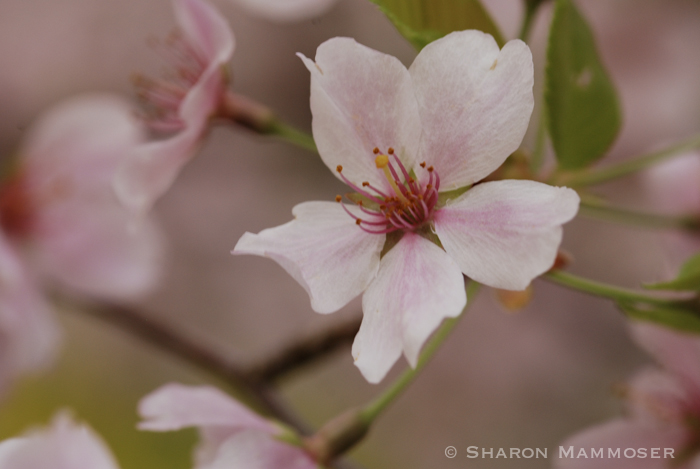 and there aren’t many insects out either so what are they to do? For many species of hummingbirds– including Ruby-throated, Rufous and Broad-tailed hummingbirds, the answer is sap from the wells of Sapsuckers. (There are 4 species of Sapsuckers.)
and there aren’t many insects out either so what are they to do? For many species of hummingbirds– including Ruby-throated, Rufous and Broad-tailed hummingbirds, the answer is sap from the wells of Sapsuckers. (There are 4 species of Sapsuckers.)
Scientists have discovered that along with 34 other species of birds, 22 families of insects and even some mammals like bats, red squirrels and porcupines, hummingbirds take advantage of the wells the Sapsuckers have created. Like the other animals, they visit the wells –drinking the sweet liquid AND feeding on the insects attracted to it. For the hummingbirds, this important food source helps them survive until the flowers are in bloom. It is in fact essential to their survival in many places.
But the association between these two birds doesn’t stop there. Scientists studying the habits of the little birds discovered that hummingbirds actually follow the sapsuckers, thus locating the wells and then they guard the wells, chasing away other birds–except the sapsuckers!– wanting to feed on the sap, much as they would a nectar feeder outside of a window in your house. You might wonder what the sapsucker gets out of this as obviously the hummer is raiding its wells. 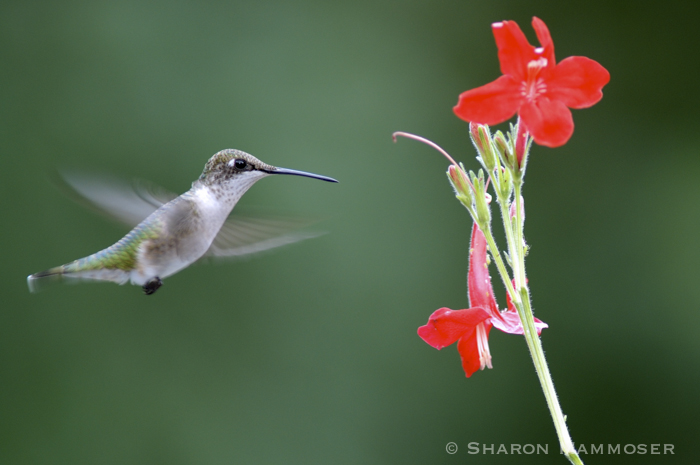 But think about the size of the hummingbird–very small, right? And so even if they drink a lot of the sap, the amount is small compared to what a warbler or phoebe might consume. Thus, it seems like the hummingbirds benefit AND the sapsuckers benefit. It’s a win-win for both birds.
But think about the size of the hummingbird–very small, right? And so even if they drink a lot of the sap, the amount is small compared to what a warbler or phoebe might consume. Thus, it seems like the hummingbirds benefit AND the sapsuckers benefit. It’s a win-win for both birds.
A third thing to point out is that hummingbirds often locate their nest close to a sapsucker well so they can continue to feed on the sap for as long as possible. Eventually the wells will stop running as the tree produces a “scab” over the wound. That’s okay because by then, the flowers will be blooming and the birds will have plenty of other sources of food.
What an amazing world we live in! So many relationships in nature that we never consider.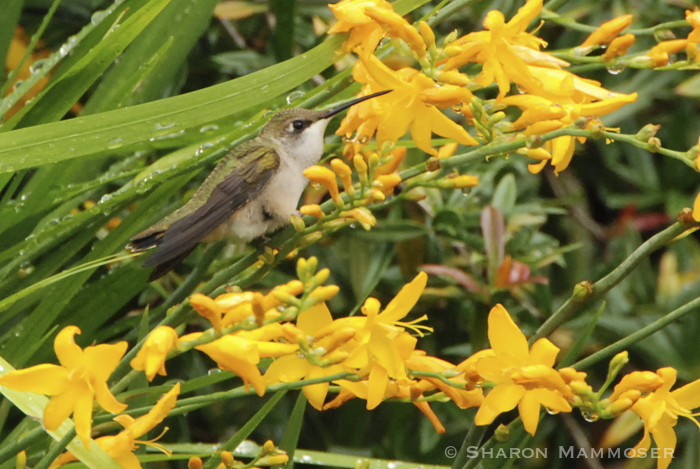
Click HERE to learn more about feeding hummingbirds.


1 thought on “What is the Relationship Between Sapsuckers and Hummingbirds?”
Comments are closed.